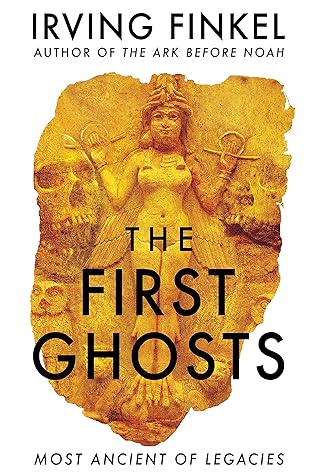More on this book
Community
Kindle Notes & Highlights
The First Ghosts: A rich history of ancient ghosts and ghost stories from the British Museum curator
Read between
January 17 - February 3, 2024
The extraordinarily remote evidence for the archaeologist is delicate, elusive and often equivocal.
Grave goods might reflect any number of cultural ideas and traditions, as well as wealth, honour or status, but whenever graves included goods side by side with the deceased, we are entitled to assume an underlying belief that some part of that individual was believed to be going somewhere. The ‘somewhere’ framework, from its very inception, is inevitably predicated on the idea, hunch-like, sketchy or sharply visualised, of an afterlife.
The important judgement is that their ghosts are not symbols or metaphors but, in their lives, realities.
Mesopotamia, or the Land-between-the-Rivers, is the ancient name given by the Greeks to what is now Iraq, with Assyria to the north, Sumer and then Babylonia to the south.
It is thanks to the cuneiform writing on tablets of clay from ancient Mesopotamia that we encounter the first ghosts in the world.
can distinguish for certain a ghost that is part of his family and one that is not. This dead person is a definite outsider. It exemplifies the transparent ‘ours or theirs’ view that underpins ghost texts.
Ishtar’s Descent and the related Netherworld compositions prized by us represent literary tradition, which has its own content and purpose, but can in no way be taken to represent day-to-day belief, or be viewed as a model for its understanding.
it seems improbable to me that one extraordinarily loose noun in any language could mean ghost, ghost-raiser, and the art of ghost-raising all at once.
Actually, cosmologically speaking, there were three Heavens: Upper, Middle and Lower.
The gods inhabited the upper levels,
Lower Heaven is the sky, where the astral bodies visible to man, the sun, moon and stars, followed their much-observed circuits. The constellations, much studied by the watchers of Babylon, were considered to be ‘drawn’ on the face of Lower Heaven.
The terrestrial disc of the Mesopotamian world was sometimes thought to be supported on pillars resting on the Netherworld.
At the Lower level were to be found the six hundred Anunnaki judgement gods.
There were plentiful, unpleasant, non-human, utukku-type demons also in the Netherworld. Some present a clear identity, such as the Baby-Snatcher (Lamashtu), the Grabber (Aḫḫāzu), the Lurker-in-the-Toilet (Shulak) or the Croucher (Rābiṣu), while others are less distinct.
All human ‘ghost-seeing’ testimony everywhere is modelled on the same detailed but artificial construction about the dead.


